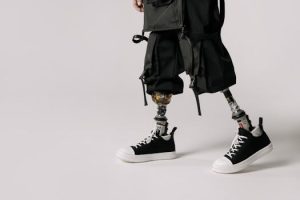Biotechnology Transforms Clothing Production Through Living Materials
Have you ever wondered what makes your clothing soft, durable, and comfortable? While fabrics like cotton and polyester have been used for centuries, a new technology is transforming the way we think about clothing production. Biotechnology, the use of living organisms and systems to develop and enhance products, is now being applied to clothing production through the use of living materials. This innovative approach is not only revolutionizing the fashion industry, but also addressing concerns about sustainability and environmental impact. Read on to discover how biotechnology is transforming clothing production through living materials.
The Rise of Biotechnology in Fashion
Biotechnology has become a widely used technology in industries such as healthcare and agriculture, but its application in the fashion industry is relatively new. The use of genetically modified organisms (GMOs) has been a controversial topic, but advancements in biotechnology have allowed for the development of sustainable and ethical alternatives. In fact, a growing number of fashion brands are now incorporating biotechnology in their production processes.
What are Living Materials?
Living materials are materials made from living organisms, such as bacteria, algae, and fungi. These organisms are genetically modified to produce specific proteins or enzymes that can be used to create fabrics. Unlike traditional fabrics, which are made from non-renewable resources, living materials are created using renewable and biodegradable resources. This makes them not only more sustainable but also less harmful to the environment.
Bacteria-Based Materials
Bacteria are one of the most commonly used living organisms in biotechnology. Bacteria-based materials can be used to create a wide range of fabrics, from silk-like fibers to breathable membranes. One example is called “Microsilk,” which is a synthetic spider silk created by genetically modified bacteria. This material has the potential to replace traditional silk, which is produced through unsustainable practices and involves the killing of silkworms. Microsilk is not only cruelty-free but also has the same properties as real spider silk, making it a highly durable and versatile fabric.
Algae-Based Materials
Algae have also been used to create sustainable materials for clothing production. One example is “SeaCell,” a fabric made from seaweed blended with cellulose. This unique combination creates a fabric that is both soft and breathable, with added health benefits for the skin due to the natural vitamins and minerals found in seaweed. Additionally, the production of SeaCell requires minimal water and energy, making it a more sustainable option compared to traditional fabrics.
Fungi-Based Materials
Fungi-based materials are another emerging trend in biotechnology. One example is “Mycelium Leather,” which is a vegan alternative to leather created from mycelium, the root structure of mushrooms. Mycelium can be grown in a lab and manipulated to create a variety of textures, making it a versatile option for creating durable and cruelty-free leather-like materials. It also has the potential to be produced on a larger scale, reducing the environmental impact of traditional leather production.
The Benefits of Biotechnology in Clothing Production
The use of biotechnology in clothing production offers various benefits, both for the environment and consumers. By using renewable resources, biotechnology helps reduce the dependence on non-renewable resources and decrease the carbon footprint of the fashion industry. Moreover, fabrics made from living materials are biodegradable, addressing the issue of textile waste and its impact on the environment. Additionally, these materials are often softer, more breathable, and more durable compared to traditional fabrics, providing a more comfortable and sustainable option for consumers.
The Future of Biotechnology in Fashion
The use of living materials is just one example of how biotechnology is transforming the fashion industry. Researchers are continuously exploring new and innovative ways to apply biotechnology in clothing production, from creating fabrics with specific properties to incorporating sustainable practices in the production process. Additionally, as consumers become more conscious of the impact of their clothing choices, the demand for sustainable and ethical options will continue to drive the use of biotechnology in fashion.
Conclusion
Biotechnology is changing the landscape of fashion by providing sustainable and ethical alternatives to traditional fabric production. The use of living materials not only reduces the environmental impact of the industry but also offers a new level of comfort and durability for consumers. With continued advancements in biotechnology, the future of fashion is looking greener and more sustainable.











